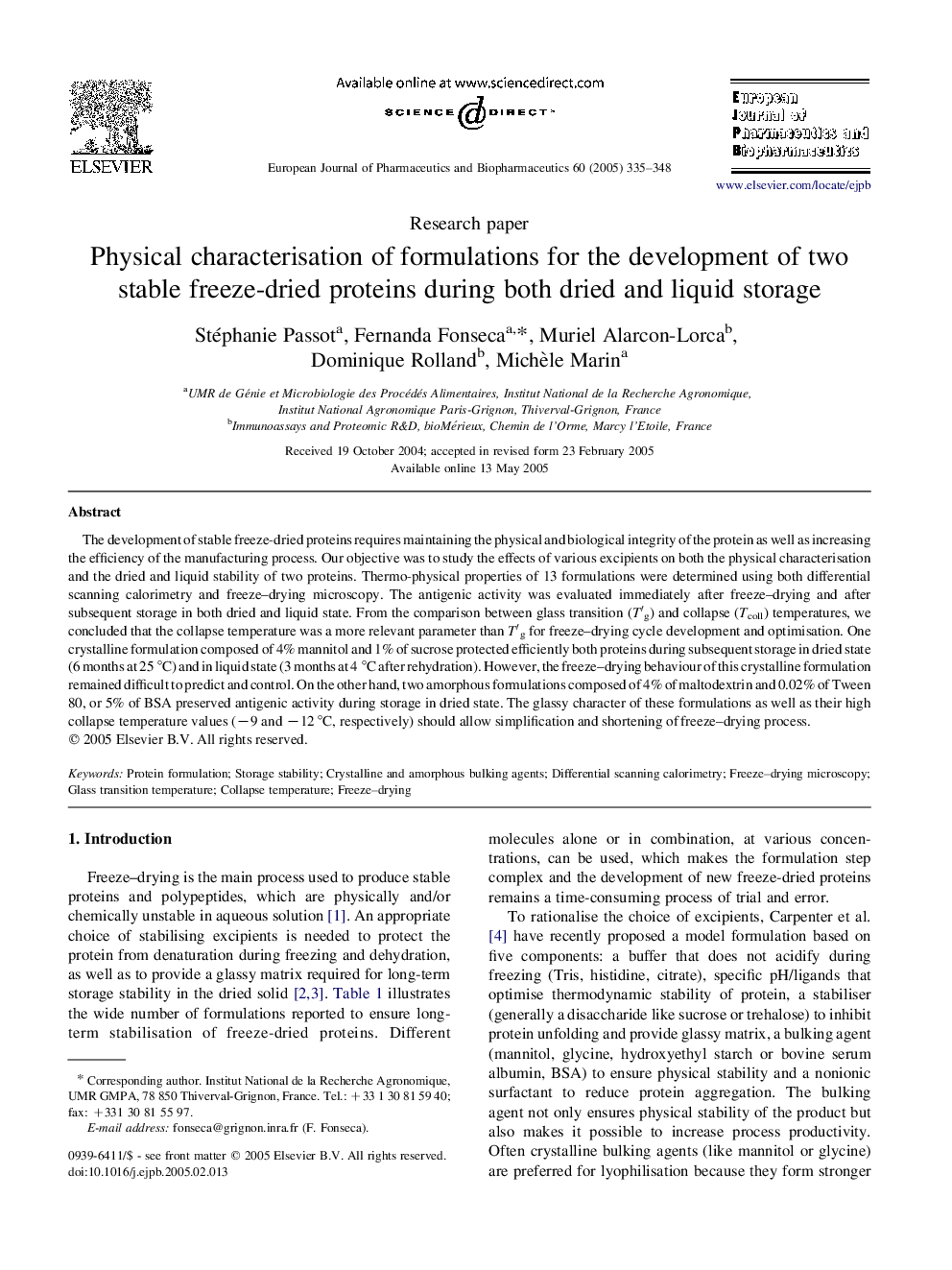| Article ID | Journal | Published Year | Pages | File Type |
|---|---|---|---|---|
| 9901442 | European Journal of Pharmaceutics and Biopharmaceutics | 2005 | 14 Pages |
Abstract
The development of stable freeze-dried proteins requires maintaining the physical and biological integrity of the protein as well as increasing the efficiency of the manufacturing process. Our objective was to study the effects of various excipients on both the physical characterisation and the dried and liquid stability of two proteins. Thermo-physical properties of 13 formulations were determined using both differential scanning calorimetry and freeze-drying microscopy. The antigenic activity was evaluated immediately after freeze-drying and after subsequent storage in both dried and liquid state. From the comparison between glass transition (Tâ²g) and collapse (Tcoll) temperatures, we concluded that the collapse temperature was a more relevant parameter than Tâ²g for freeze-drying cycle development and optimisation. One crystalline formulation composed of 4% mannitol and 1% of sucrose protected efficiently both proteins during subsequent storage in dried state (6 months at 25 °C) and in liquid state (3 months at 4 °C after rehydration). However, the freeze-drying behaviour of this crystalline formulation remained difficult to predict and control. On the other hand, two amorphous formulations composed of 4% of maltodextrin and 0.02% of Tween 80, or 5% of BSA preserved antigenic activity during storage in dried state. The glassy character of these formulations as well as their high collapse temperature values (â9 and â12 °C, respectively) should allow simplification and shortening of freeze-drying process.
Keywords
Related Topics
Life Sciences
Biochemistry, Genetics and Molecular Biology
Biotechnology
Authors
Stéphanie Passot, Fernanda Fonseca, Muriel Alarcon-Lorca, Dominique Rolland, Michèle Marin,
